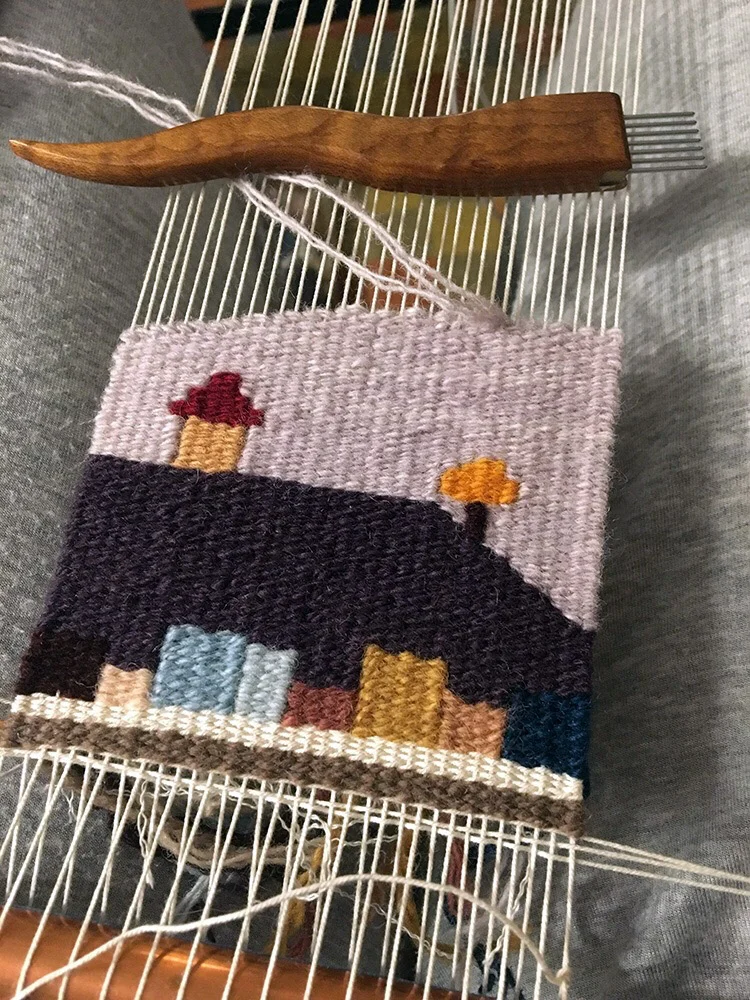Analog. Our brains design better in analog.
I know you might not believe it (what with my youthful glow), but computers as a personal device did not exist when I was a kid. I was born in the 70s and as a pre-teen I received an electric typewriter for my birthday along with a typing course on 45 rpm records. And yes, I had a red plastic record player in my room on which I mostly played a Tchaikovsky record of Swan Lake. I learned to type in a flash. I loved those exercises. Whole pages of unintelligible jibberish which quickly taught my brain where all the letters were. I can’t imagine not being able to touch type. I still remember the hum of the electric typewriter and the clunk of each key being pressed.
Designing for tapestry
There are as many ways to design for tapestry as there are tapestry weavers. Everyone has to find their own way. But over the last couple years I have employed one particular technique that I find shakes my brain loose and helps me conquer the fear that comes up when designing large pieces.
I start small. I don't have any fear at all about making something that is only a few inches square. The warp goes on quickly and whatever comes out of it, I'll have gotten in some practice and learned something about color and design.
The video below talks about this process and even shows me weaving one of these small pieces.
A tapestry weaver's signature technique
There are many tapestry weavers who make work that is very recognizable. Most of us have a style we work in for awhile as we explore an idea and some weavers use a particular way of filling space that helps identify the work as theirs.
....
There are endless examples of this sort of thing. As you look at tapestries, think about what devices the weaver is using to express themselves and which of those are particularly weaverly in form.




